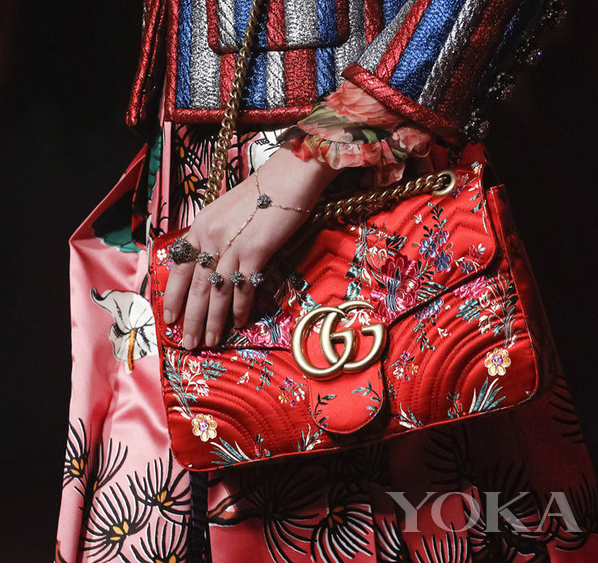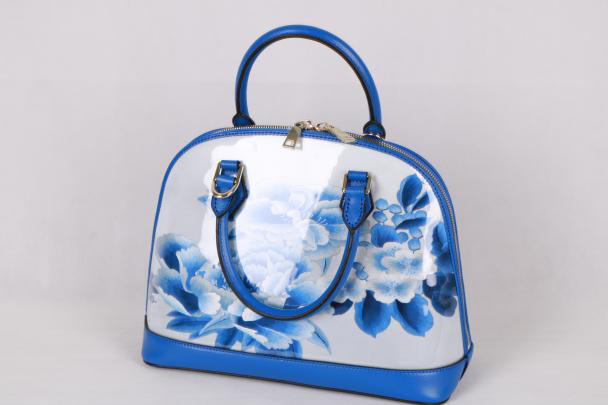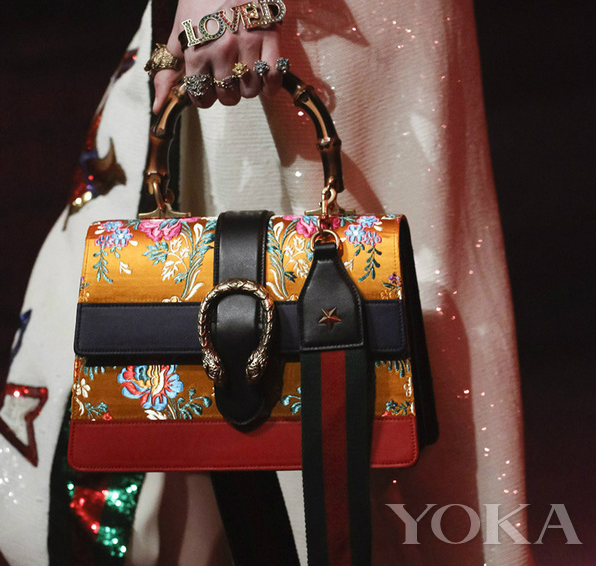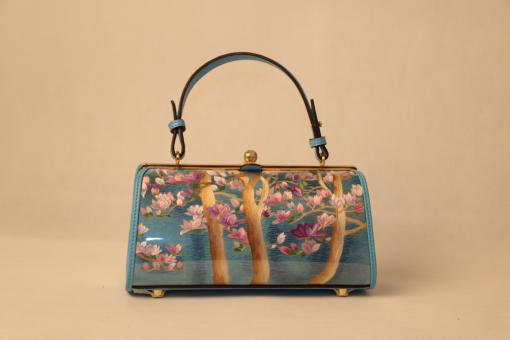The fusion of Chinese jewelry tradition and fashion
Hundreds of years before Tiffany's six-claw diamond ring was popular, the Chinese royal jewelers had created the world's best inlay, filigree. They process precious metals such as gold and silver into filaments, and then shape them by pushing, crepe, weaving and other processes. It can be welded on the gold and silver square pieces to make the bottom support. The pearls, crystals, white jade, jade and other jewels can be fixed on the gold and silver jewellery at different angles according to the needs of the craftsman design. It can also be independently shaped to decorate a creative composition. In the details. Qeelin works Helen & Fen works In the book "Luxury Color", Song Yuanming's gold and silver research expert Yang Zhishui described in detail a Ming Dynasty golden silk (a kind of silk silk craft) unearthed in Nanchang. The nine-centimeter-long narrow gold bar is made into a curved beam, and the silk is made of peony, peach blossom, apricot flower and two pairs of bee-eaters and a pink butterfly. The thin gold piece is used as the tortoise of the butterfly, flower, petals and wings. Fill the fine filaments flatly, then weld them together and inlay them into a small piece. Nine flowers are spliced ​​from the center of the flower with the fine gold wire, and then the finished 'screw' is removed from the core wire. On the butterfly, one end passes through the flower core or the petals and then is tied to the curved beam. The bee butterfly gently picks up on the flower and has different postures. The butterfly is the moment of harvesting, and the bee is falling. The moment that has not fallen." Yu's pearl works The Imperial Palace Museum in Beijing has exhibited a gold enamel inlaid with pearls, corals and sapphires. The taro is a large, shaped pearl that is about five centimeters long and looks like a urchin in a dance style. The left side of the pearl is decorated with a sapphire-carved bottle, and a few red coral branches are inserted into the bottle to set off an "An" character. Behind the urchin, a gold handle is attached, and it is connected with the treasure bottle, and the golden tired silk Ganoderma lucidum is exposed to the right side of the urchin. The whole scorpion is connected together and is called "the boy's newspaper is safe." In the long history of mankind, the ancestors of the Chinese nation have created a splendid culture with labor and wisdom. Chinese culture has a long history and continues to have an impact on today's life. Many of the folk arts and crafts are our people's precious wealth. Embroidery, as one of the elements of Chinese style, is also one of the ancient handcrafts in China. For thousands of years, the embroidery culture not only affects the Chinese people's clothing plots deeply, but also foreign designers have the embroidery culture in China Strong interest in today's Chinese embroidery as many foreign designers bag design elements, regardless of Germany or Japan their product designers and business production, must have a strong sense of quality, which makes the embroidery elements in the fashion industry A big fire. As a national embroidery in China, Aishe Hui Hui Embroidery sheds the quintessence of five thousand years of traditional culture in our bones. We combine and combine the features of today's foreign and Chinese bag brands, and add some nationalities Elements, the result tells us that we should take the road of the quality of ingenuity.
At the mention of the embroidery, you feel very jiangnan Watertown, is very traditional, but the embroidery is very fashion, because this traditional design made in peacetime, decorative pattern is very suitable for small bag, then we come and check it.
Embroidery bag features:
Hand Embroidered Handbag,Lady Hand Embroidery Handbag,Shoulder Lady Hand Embroidery Handbag,Fashional Jewelly Embroidered Handbag Haiyuan Aisha Handicrafts Company Limted , https://www.nxembroidery.com.jpg)
.jpg)
Helen & Fen works
Many pocket watches collected in the Palace Museum in Beijing use filigree inlays. The characters on the case are only the size of the rice grain, but the fiber is complete, and the eyelashes are clearly defined. Under careful observation, it can be discerned that some people's eyes are black and others are blue.
The filigree was founded in the Han Dynasty and has a history of more than 2,000 years. However, most of it was applied to Buddha statues or royal crowns in the early days. In the Ming Dynasty, the country advocated handicrafts and pursued Qi Qiao. The silk craftsmanship also achieved unprecedented breakthroughs, and it was called “Yanjing Eight Musts†with Cloisonne, Tooth Carving and Gong Embroidery. .jpg)
.jpg)
Chen Shiying's works
Cartier is famous all over the world, mostly because it has a beautiful title - "the emperor's jeweler." The emperors of China not only have their own dedicated jewellery workshops (the Ming Dynasty is the inner court silver bureau, the Qing Dynasty is the office of the Ministry of the Interior), and many kings are personally involved in the design of jewelry.
On October 16th, the 7th year of Yongzheng in the Qing Dynasty, the Office of the Yangxin Temple recorded such a file: "The eunuch Liu Xiwen handed over: a pair of golden silks, a pair of beads, four beads, two rubies Block, inlaid with a pair of golden silk orchids, four beads, two gems, a pair of plum blossoms, a pair of gourd, six beads each, two stones. The purpose: this is very good, Do something like this, and do it."
Palace jewelry, not only pay attention to the use of materials, fine hand, but also requires patterns and patterns to bring good luck and bless peace.
When Emperor Qianlong celebrated his 60th birthday for his mother, he specially prepared dozens of novel and auspicious jewels in his birthday ceremony. For example, everything goes well, Mei Ying Cai Sheng, Jing Fu Chang Mian, and Japanese Yong Qin Book , Riyue Shengheng Wanshouyi, Renfeng Pufan, Wannian Jiqingyu, Fanghuji Ruibianhua (鬓花), Yaochi Qingweibianhua, Xichi Xianshou, Wannian Yuzhu, Tianbao Yiyi Qingyun has a good fortune, green snow and fragrant scorpion. .jpg)
.jpg)
Qeelin works
In addition to "Filigree", "Diancui" is also a unique craft of Chinese jewellery: firstly, the base is made of gold and silver pieces according to the flower shape, and then the gold wire is used to weld a raised groove with the edge of the pattern flower shape. Apply glue to the concave part in the middle, cut the feathers of the kingfisher with small scissors, and gently arrange the feathers on the glued base with tweezers. The kingfisher hair is topped with emerald blue and snow blue, and its color is gorgeous, and it has not been retired for a long time. In 1958, the Emperor Mingjing of the Ming Dynasty, which was unearthed in Dingling, Beijing, was embellished with jewels and crowns. It was buried in the underground palace that has not been seen for more than 300 years. It is still magnificent and bright.
In the early years of the Qing Dynasty, the emerald was introduced into the Chinese court. The flats required by the Manchu ladies to comb the "two heads" were mostly made of jade. The jadeite flats preserved in the Palace Museum are some green and watery, while others are embellished with jade patterns such as gold and silver, blue sky and longevity, group flowers and bats.
In the Tongzhi and Guangxu years, because of the crazy obsession of the Empress Dowager Cixi, the jade, known as the "Royal Jade", once set off a wave of national bidding in China.
According to legend, because Cixi has not been a queen, she can't wear the red dress that is used in the "room". Only pink and green that belong to "妾ä¾" can be used. After becoming the Queen Mother, she is still very sensitive to this. When the banquet was held in the palace, Cixi often generously took out his collection of jewels and selected the nieces who came to the party. The daughter of Prince Gong, who was raised by Cixi and specially enshrined the title of Princess, “The Princess of Rongshou†knows her mind best. Every time she takes the lead in picking green jade, she is very curious. Other nobles and mistresses have also seen it, and they must wear jade jewelry on important occasions.
On the birthday of Cixi, a minister who returned from a foreign country gave the Queen Mother an elephant decoration made of diamonds. The result was amazed to find that the reward he received was far less than the other offering a jade pendant. The minister is rich.
After the death of Cixi, the eunuch Li Lianying wrote in his book "Love Moon Xuan Notes": There are three kinds of jade treasures in the Queen's funeral objects, one jade cabbage and two jade watermelons. Jade cabbage is a green leaf and white heart. There is a green cockroach on the heart of the dish. There are two yellow wasps next to the leaves. The jade watermelon is green skin, red peony and black seeds. All natural colors are crafted by artisans. Heart match.
Today, at the Palace Museum in Taipei, you can see the famous jade cabbage. But a pair of emerald watermelons, but after Sun Dianying opened the pirate, there is no more news.





Fine workmanship, solid, double-sided embroidery, embroidery neat, no frizzy thread and interface, comfortable original soft handle, unique embroidery design, retro elegance.
Embroidery bag types:
folk-custom
fashion
Shoulder Bags
backpack
Diagonal package
